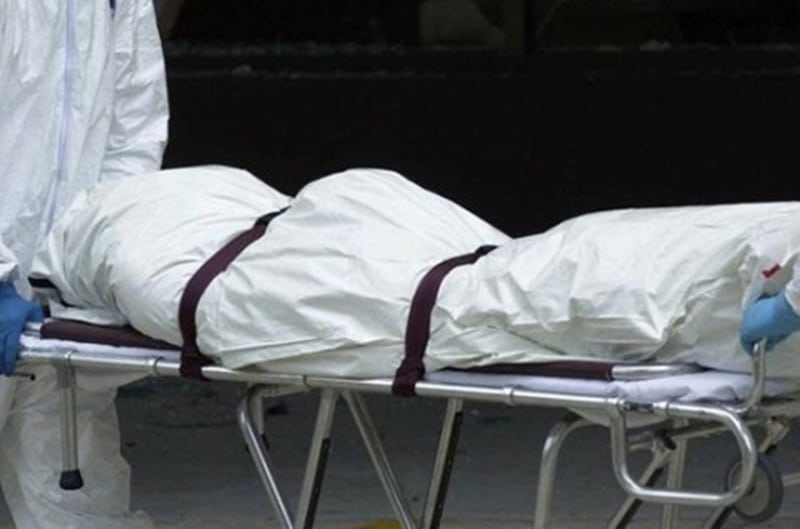In disasters, many people can get hurt. Sometimes, many people die at the same time. This situation is called a mass casualty event. Handling and caring for the dead quickly and safely is important. One very important tool for this is a disposable human remains pouch.
This article explains why these pouches are needed after disasters. It talks about how these simple bags help keep communities safe and healthy.

What is a Disposable Human Remains Pouch?
A disposable human remains pouch is a special bag made to carry bodies after people die. Some people call these bags body bags, cadaver bags, or corpse bags. They are made of strong, waterproof materials and used only one time.
There are many types of disposable human remains pouches. Some common types are:
- Body bag for corpse, cadaver bag
- Funeral disaster pouch body bag
- Hospital body bag, plastic post mortem bags
- Heavy duty post mortem body bag
- Saco para cadáveres descartável com pegas
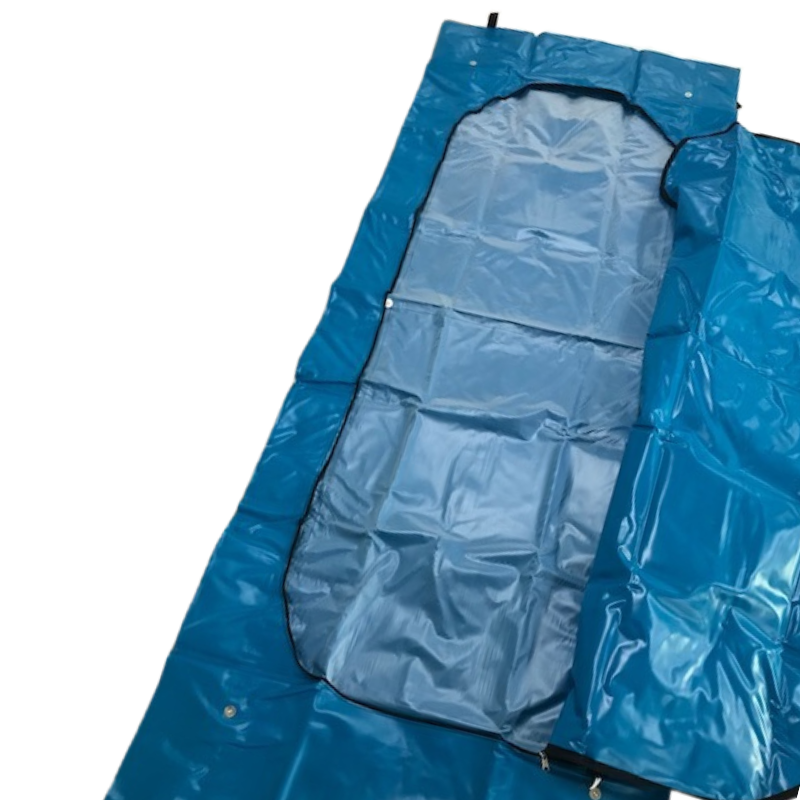
Why are Disposable Human Remains Pouches Essential After Disasters?
Disasters like floods, earthquakes, or big accidents create many problems quickly. One of those problems is handling those who have died. Here is why disposable human remains pouches are very important after disasters:
1. Protect Health and Safety
When many people die in a disaster, germs and diseases can spread quickly. Using disposable human remains pouches stops germs from spreading. They protect emergency workers and others nearby.
Disposable body bags help:
- Stop disease spread
- Keep germs inside the bag
- Protect rescue workers from getting sick
2. Easy to Use Quickly
During a disaster, time is very important. These bags are designed to be easy to use:
- Strong handles make carrying easy
- Zippers close securely
- No need for extra cleaning, saving more time
3. Help Identify Victims Clearly
When disasters happen, it is important to identify who has died. Disposable human remains pouches have special tags or labels to write details on. This makes it easy to identify people later.
Tags can show:
- Name (if known)
- Location found
- Important information for families
4. Keep Rescuers Safe and Healthy
Disposable pouches protect rescue teams who work in dangerous places. These bags help them handle bodies safely. Disposable PPE items like disposable gloves e máscaras faciais descartáveis can also be worn to keep rescue workers safer.
5. Easy Transport and Storage
Pouches have strong handles and are made to carry up to heavy weight comfortably. This is important when many bodies must be moved quickly. Disposable pouches help:
- Move bodies quickly
- Carry bodies safely
- Store bodies until they can later be treated or buried
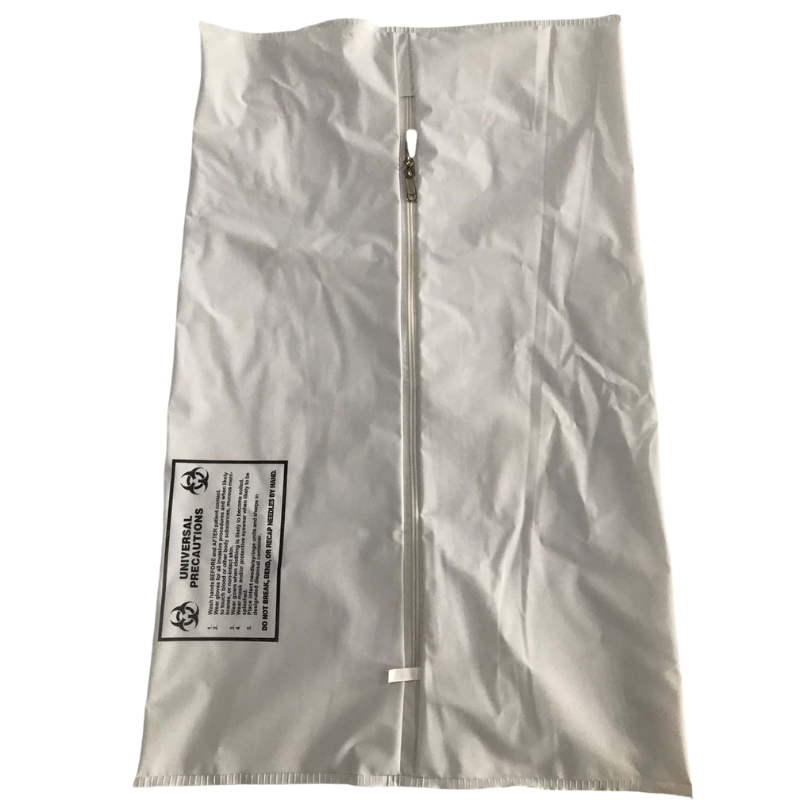
Materials Used for Disposable Human Remains Pouches
Disposable body bags use these strong, waterproof materials:
- PEVA (waterproof and durable)
- PVC or vinyl (strong, thick plastic)
- PP fabric (tough and lightweight)
These materials stop leaks and help stop germs from escaping the bags.
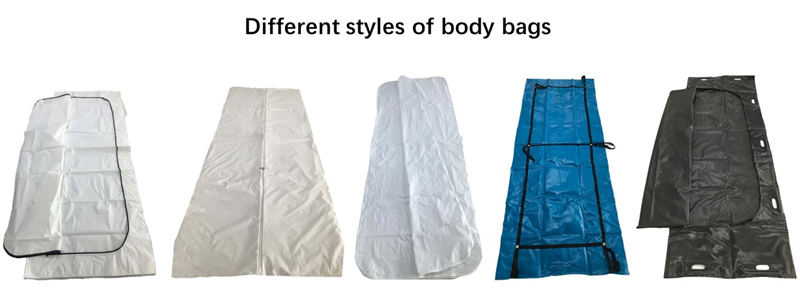
How to Use Disposable Human Remains Pouches Correctly
Safe and careful handling is very important during rescue efforts. Here are clear steps to using disposable human remains pouches safely:
- Wear disposable gloves and masks to protect yourself from germs.
- Carefully place the body into the pouch.
- Close the zipper completely and securely.
- Check carefully that all parts are in the bag.
- Clearly mark identification tags with all necessary information.
- Use handles to safely carry and transport the pouch to the storage area.
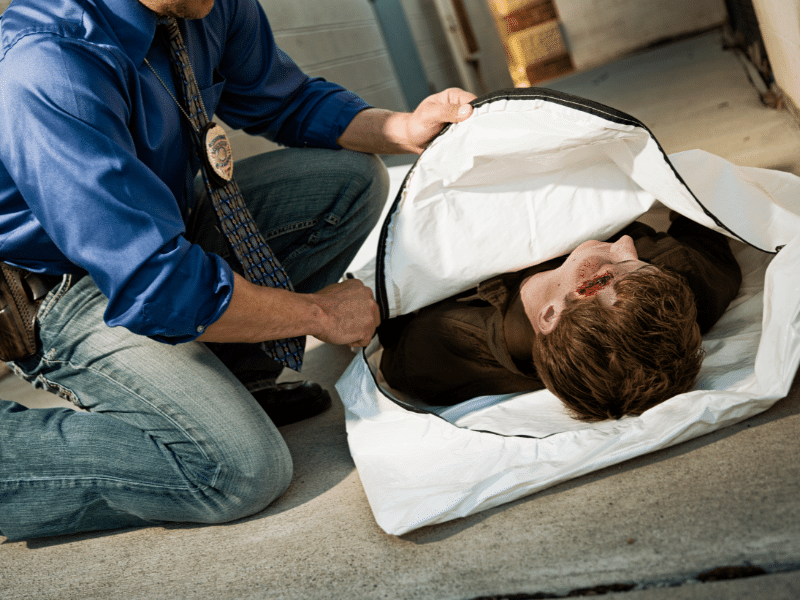
Why Disposable Bags are Better Than Reusable Ones
Disposable human remains pouches have many advantages over reusable bags:
- No cleaning needed (saving time and preventing disease)
- Always clean and safe
- Can be quickly stocked and stored in large numbers
- Help medical teams manage mass casualty events more efficiently
Planning for Disaster with Disposable Human Remains Pouches
Having a good disaster-response plan makes things easier when emergencies occur. Always keep supplies of disposable human remains pouches ready. Include these items to prepare:
- Enough disposable pouches to handle large numbers
- Disposable protective clothing como fatos-macaco descartáveis e aventais descartáveis
- Protectores de sapatos descartáveis to keep rescue workers safe
- Necessary PPE (disposable gloves and masks)
Emergency plans should always include disposable human remains pouches, so teams can respond quickly and safely.
Steps for Good Mass Casualty Management
Here are simple steps to good management of mass casualty events:
- Preparedness – Be ready before the disaster happens. Stock supplies and train teams ahead of time.
- Quick Response – Move quickly to save lives, identify the dead clearly, and prevent the spread of disease.
- Safe Storage – Use disposable pouches to safely transport and store remains.
- Clear Communication – Keep clear identification tags and share information carefully with families.
Using disposable human remains pouches is a key step to good management and safe response.
Where Disposable Human Remains Pouches Are Needed
These pouches can be used in many emergency places:
| Event/Place | Why They Matter |
|---|---|
| Earthquakes and floods | Quickly handle large numbers of victims safely |
| Hospitais | Safely manage infectious diseases and transport dead patients |
| Airplane crashes | Quickly and safely identify and move victims |
| Local emergency services | Always ready and well-prepared for emergencies |
These special bags help in all these areas, keeping the community safer during emergencies.
Helping Families After Disasters
Good management of the dead helps grieving families. Disposable human remains pouches keep clear details to make this process easier and faster:
- Clear IDs help families find loved ones quickly.
- Good practices help the grieving process start smoothly.
- Families know loved ones are handled carefully with respect.
Conclusion: A Simple Tool with Big Benefits
Disposable human remains pouches are simple tools with big benefits. They:
- Protect the health and safety of rescue workers
- Save time and effort in emergency situations
- Allow clear and respectful handling of victims
- Help emergency teams respond faster and better
Always have these important disposable items ready in your emergency or disaster management plans. This preparedness helps everyone do their jobs better and keeps communities safer during difficult times.

